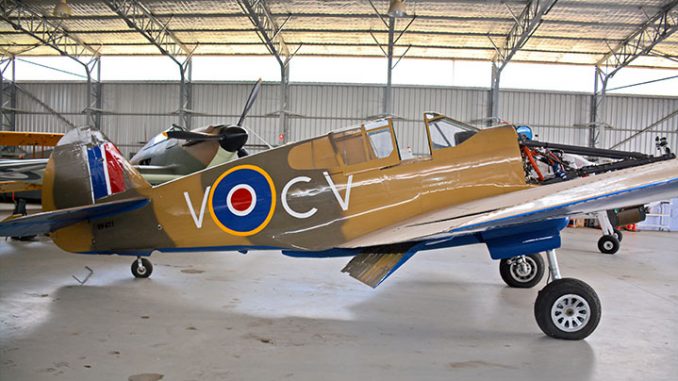
With the recent feature article that WarbirdsNews published concerning Curtiss Kittyhawk Mk.1A ET574 that recently re-emerged in Egypt following a rather unfortunate makeover, we thought we might followup with a story from the other side of the world on the somewhat better fortunes of another Kittyhawk representing the desert campaign during WWII in North Africa.
Our good friend John Parker at Warbirds Online in Australia has allowed us to share a nice piece he recently wrote showing fascinating insight into the efforts at Vintage Fighter Restorations in Scone, New South Wales to return a P-40E/Kittyhawk Mk.1A to the skies following a significant hiatus on the ground. Before heading into John’s article, we thought we should share some of the Kittyhawk’s history, as despite her current Desert Campaign markings, this fighter is a South Pacific combat veteran that flew and fought for two different nations. Interestingly, this aircraft was originally destined to join the RAF as ET433, but never took up that identity officially. Following the Japanese attack on Pearl Harbor, the U.S. War Department intervened and diverted the Kittyhawk to the U.S. Army Air Forces as P-40E Warhawk 41-25109 instead. They shipped her to Australia in 1942, from where she left to join the 68th Fighter Squadron at Fua’motu on the South Pacific island of Tonga. However, on October 27th that year, the 68th FS transferred their 23 P-40s to personnel from the newly-arrived 15 Squadron of the Royal New Zealand Air Force. P-40E Warhawk 41-25109 then became Kittyhawk Mk.1A NZ3094 with the RNZAF. 15 Squadron were heavily engaged with the enemy, and moved with their Kittyhawks to Espiritu Santo in February, 1943 to continue the fight as the Allies began retaking Japanese-occupied territory. Following combat operations, the Kittyhawk returned to New Zealand for eventual retirement. In March, 1948, the RNZAF sold NZ3094 for scrap. She ended up at the now famous Asplin’s Supplies yard in Rukuhia, along with the remaining RNZAF Kittyhawk fleet, and indeed their Corsairs as well. NZ3094 and a handful of other airframes survived long enough at Rukuhia to be worthy of rescue. John Chambers recovered the Kittyhawk from Asplin’s in 1971, but by this point she was a stripped-out hulk. The Kittyhawk remained this way until the late Col Pay acquired her in 1994 and took the fighter back to his workshop in Scone, Australia. She flew again for the first time following restoration in 2004. Pay restored her to represent Kittyhawk Mk.1A ET953 during her time in the North African desert campaign with 3 Squadron of the Royal Australian Air Force. The real ET953 was the regular mount of 3 Squadron’s Commanding Officer, the renowned Australian ace ‘Bobby’ Gibbes.
Overhauling A Kittyhawk
by John Parker
Over the past few months, the team at Vintage Fighter Restorations (VFR) in Scone, NSW has been working on several warbirds within Ross Pay’s fleet, and this provided an opportunity to view the aircraft’s interesting internal details that the public rarely sees.
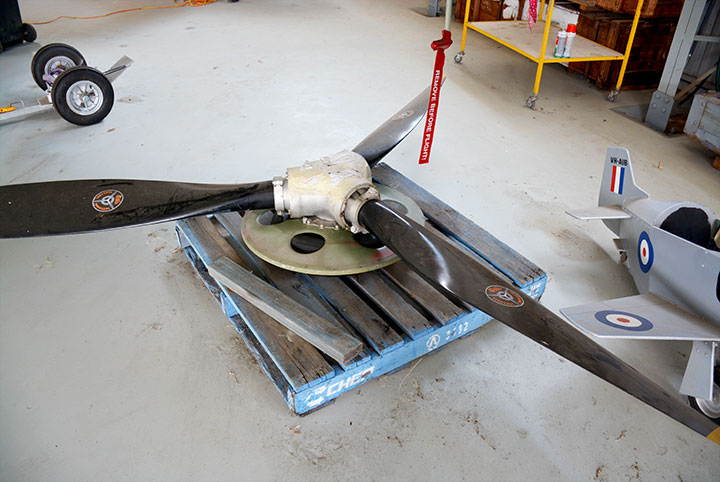
Curtiss P-40E 41-25109/Kittyhawk NZ3094 (registered in Australia as VH-KTY) has been hangar-bound for some months now undergoing maintenance, the most significant aspect of which has been the overhaul of its Allison V-1710-115 liquid-cooled V12 engine. The aircraft has been flying since 2004, and was in need of routine engine work. Interestingly the aircraft’s engine has undergone its refurbishment in-house at the VFR engine shop under the expert hands of Alf Morgan. At the time of our visit, the engine was largely stripped down, which revealed much of it’s interior, including the unusual rocker arm arrangement which uses just one rocker to operate two valves as opposed to the Rolls-Royce Merlin’s one rocker per valve – quite an innovative feature. One of the Allison’s cylinder banks was under reassembly after having the cylinders honed and the valves reground. This was an interesting process to witness, as it’s not usually possible to get a good look inside one of these mighty V12’s.
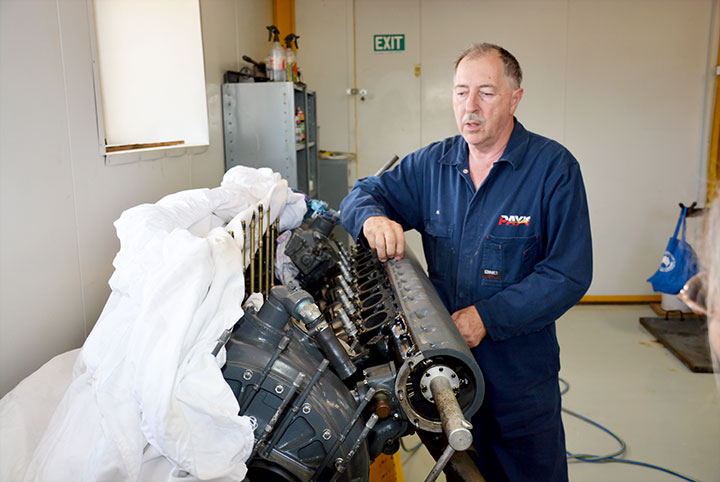
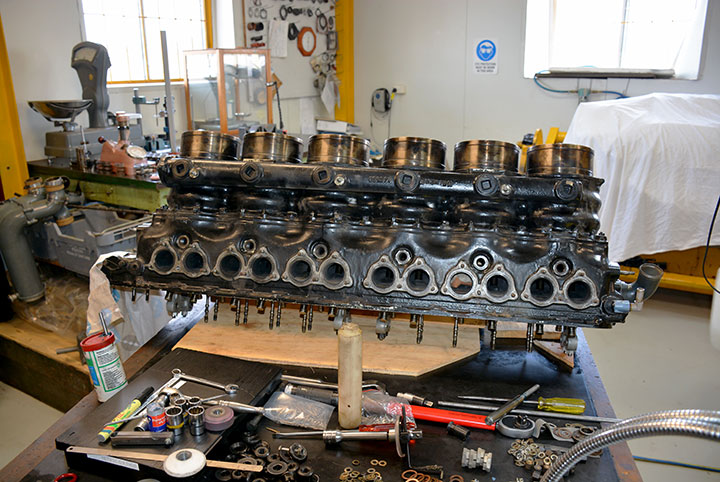
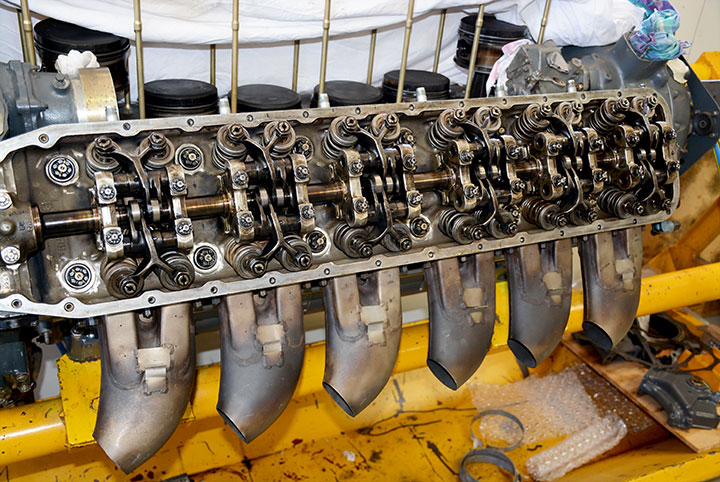
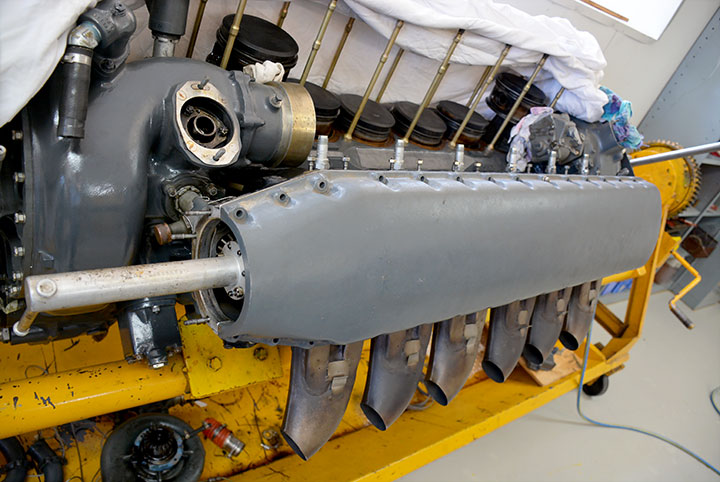
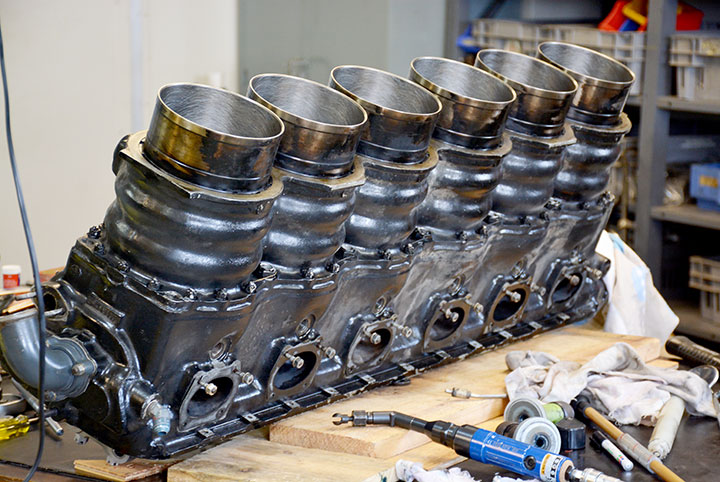
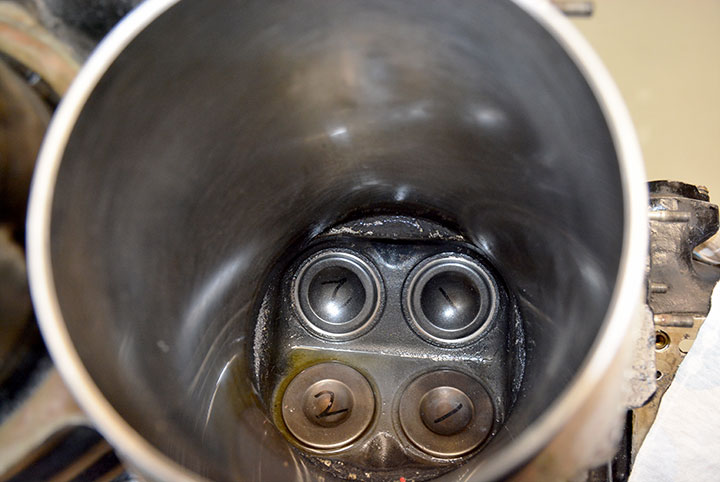
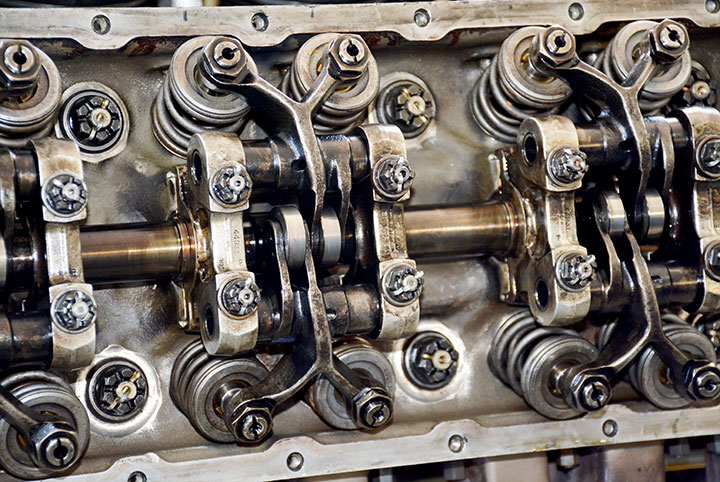
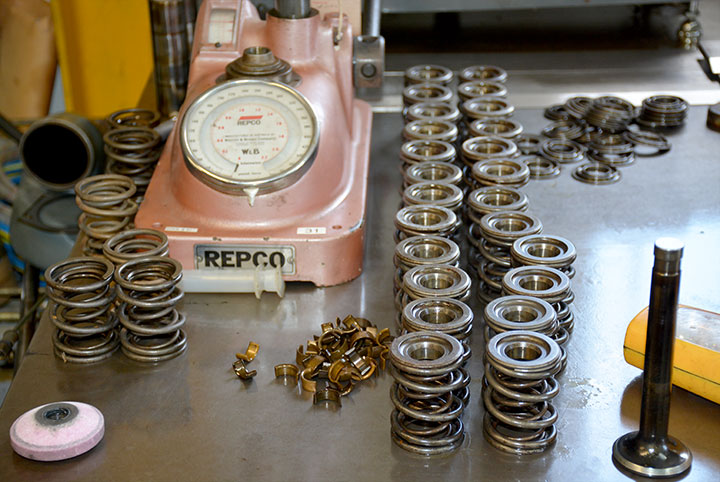
The Allison will soon be fully reassembled and refitted to the Kittyhawk for testing, while other routine work takes place on the airframe in readiness for a test flight in the next month or so. It will be great to see this magnificent P-40E back in the sky where she belongs.
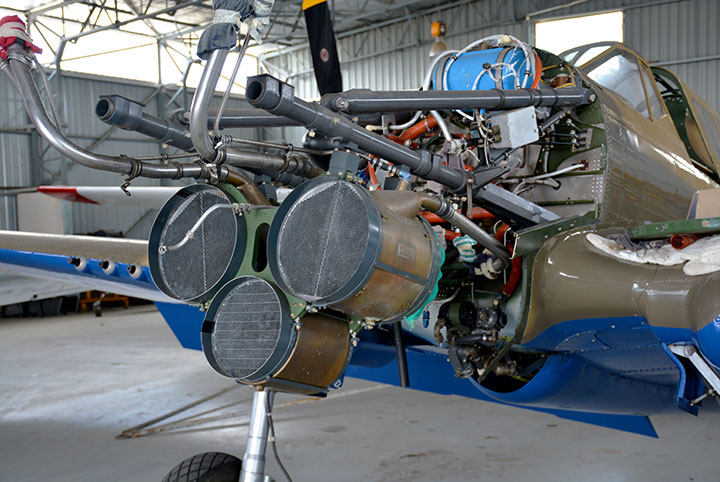
The other major activity in Vintage Fighter Restoration’s hangar was the maintenance work on Canadian-built Hawker Hurricane XII RCAF 5481 VH-JFW. The aircraft’s radiator required an overhaul, and given its location within the fuselage, this has been an interesting operation. Once the radiator had been removed, a number of options were considered in order to have it refurbished, with the eventual decision being to farm out the work to a well-respected company in New Zealand. The radiator has since returned from overhaul and is now in the process of being refitted to the Hurricane.
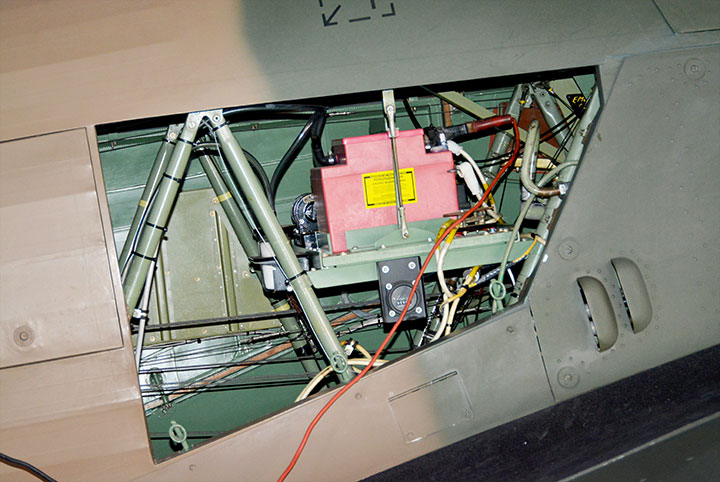
The Hurricane is also undergoing other routine maintenance, and it too should fly again within the next four to six weeks. More history on this aircraft is in our earlier story on the restoration and flight of Hawker Hurricane, Serial No 5481.
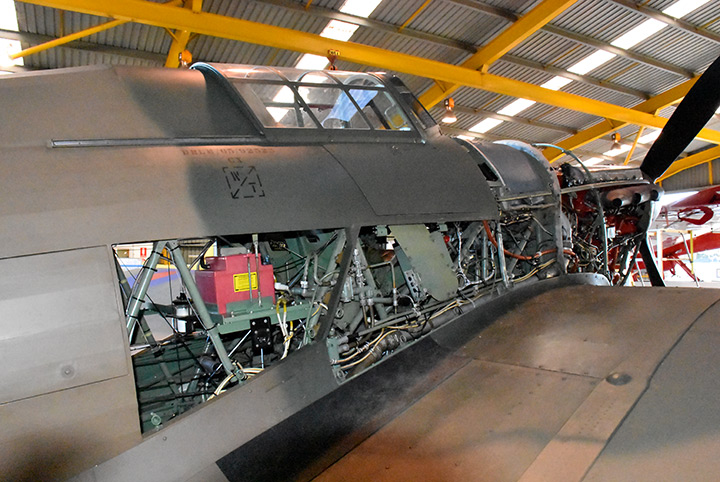
Additional work on other aircraft within Pay’s fleet is taking place in the hangar in anticipation of the much awaited Warbirds Over Scone Airshow which will take place on Sunday the 25th of March, 2018. This will be an excellent gathering of warbirds and will include Pay’s P-51 Mustang, Hurricane, Kittyhawk and maybe a special arrival mystery attraction as well as the T-6 Harvard and some of the resident Fire Bombers. Paul Bennet will also attend with his aerobatic aircraft and the much loved Grumman TBM Avenger and CAC Wirraway.
Also attending is the FW 190 from Albury, New South Wales. This will mark the first time that this impressive German fighter will share the skies with a Hurricane in the Southern hemisphere. Both aircraft are the only airworthy examples of their kind in Australia today and bringing them together will really be something special.
Many other warbird attractions will be attending including a Spitfire and other Mustangs, so it promises to be a must-see event for any dedicated vintage military aviation enthusiast.
WarbirdsNews wishes to thank John Parker very much for his article and images, and we look forwards to more of his updates in the future. We hope our readers feel the same way.
Related Articles
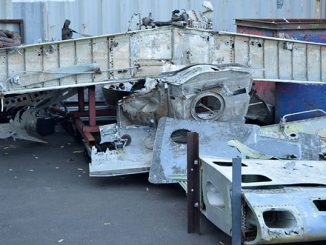
Lightning Progress Downunder – P-38 Restoration Report – January, 2018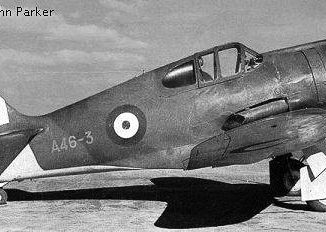
All Boomerangs Come Back: An Australian Fighter’s Gradual Return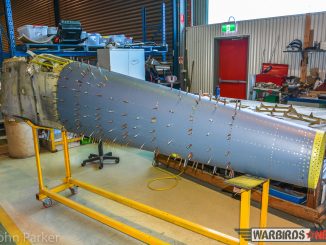
Lightnings Downunder – P-38 Restoration Report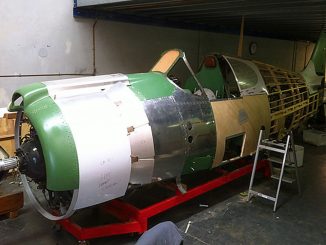
Boomerangs Downunder – Warbird Restoration Update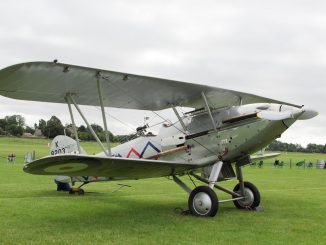
Hawker Demon Resurrected in Australia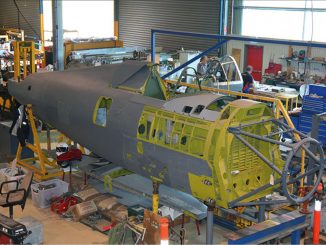
Warbird Restorations Downunder – Rob Greinert’s Workshop
Richard Mallory Allnutt's aviation passion ignited at the 1974 Farnborough Airshow. Raised in 1970s Britain, he was immersed in WWII aviation lore. Moving to Washington DC, he frequented the Smithsonian’s National Air & Space Museum, meeting aviation legends.
After grad school, Richard worked for Lockheed-Martin but stayed devoted to aviation, volunteering at museums and honing his photography skills. In 2013, he became the founding editor of Warbirds News, now Vintage Aviation News. With around 800 articles written, he focuses on supporting grassroots aviation groups.
Richard values the connections made in the aviation community and is proud to help grow Vintage Aviation News.

Be the first to comment
Graphic Design, Branding and Aviation Art